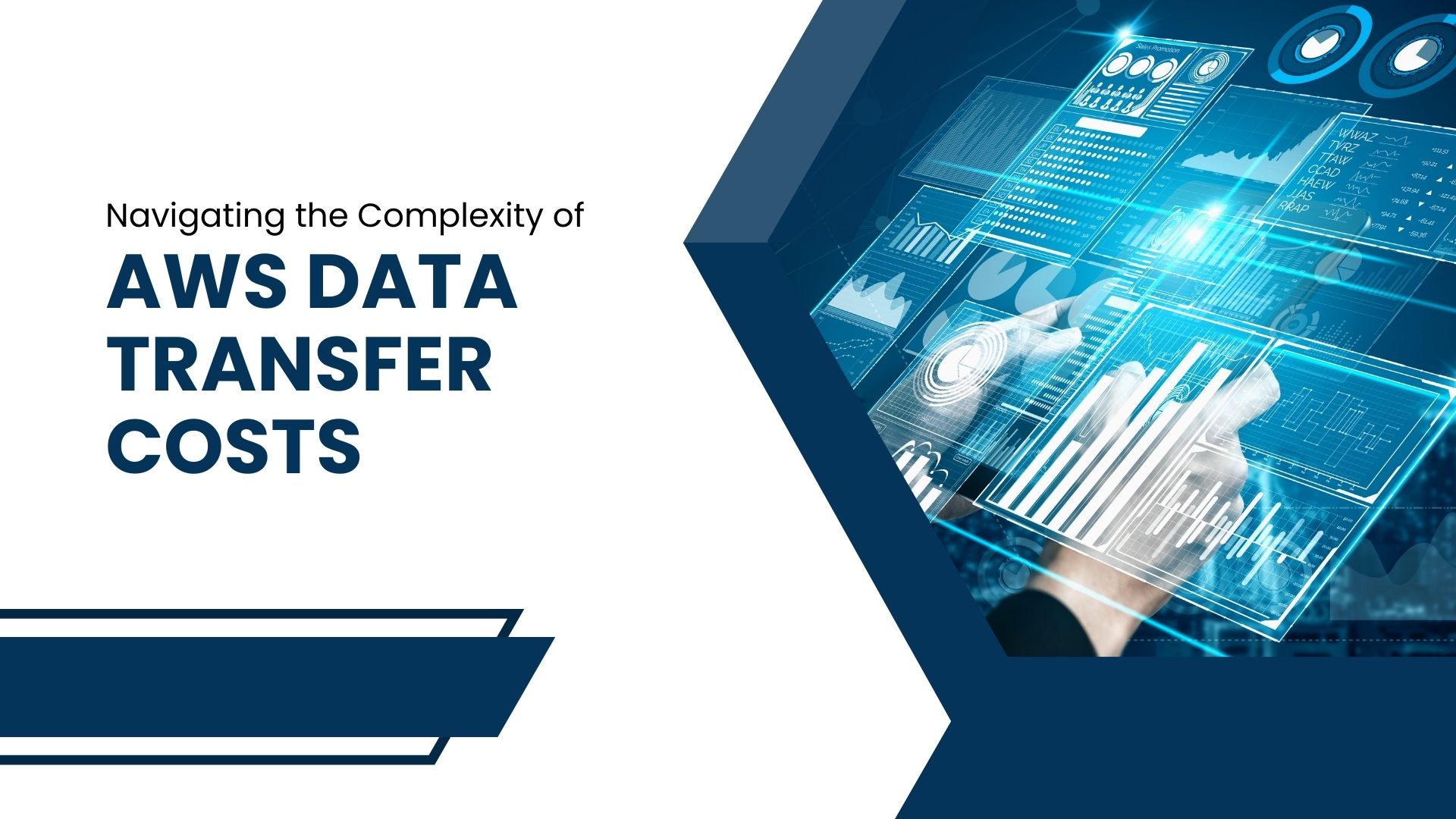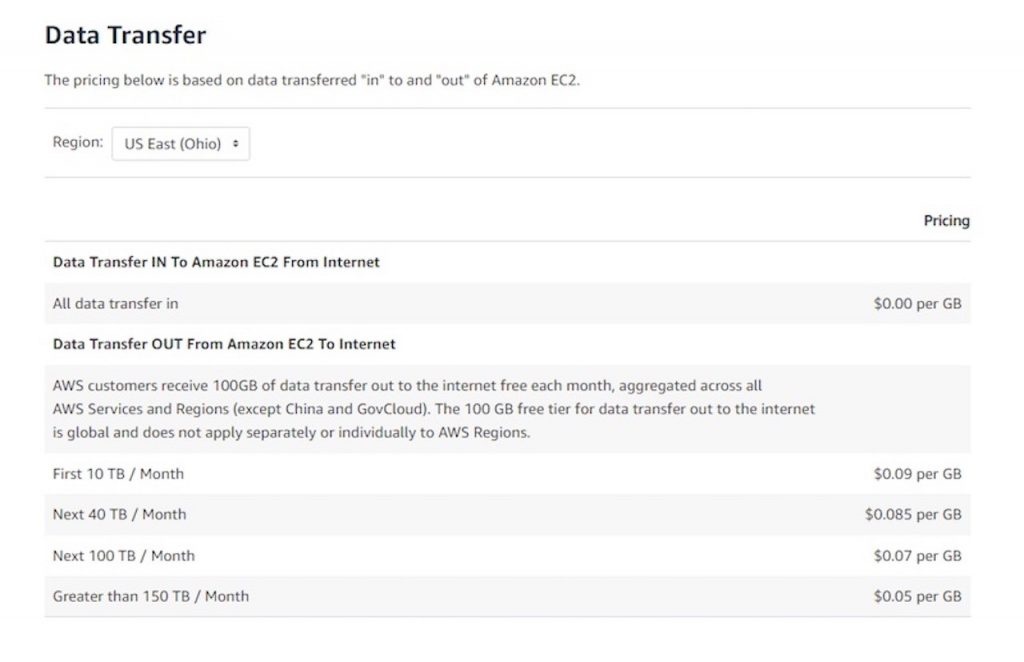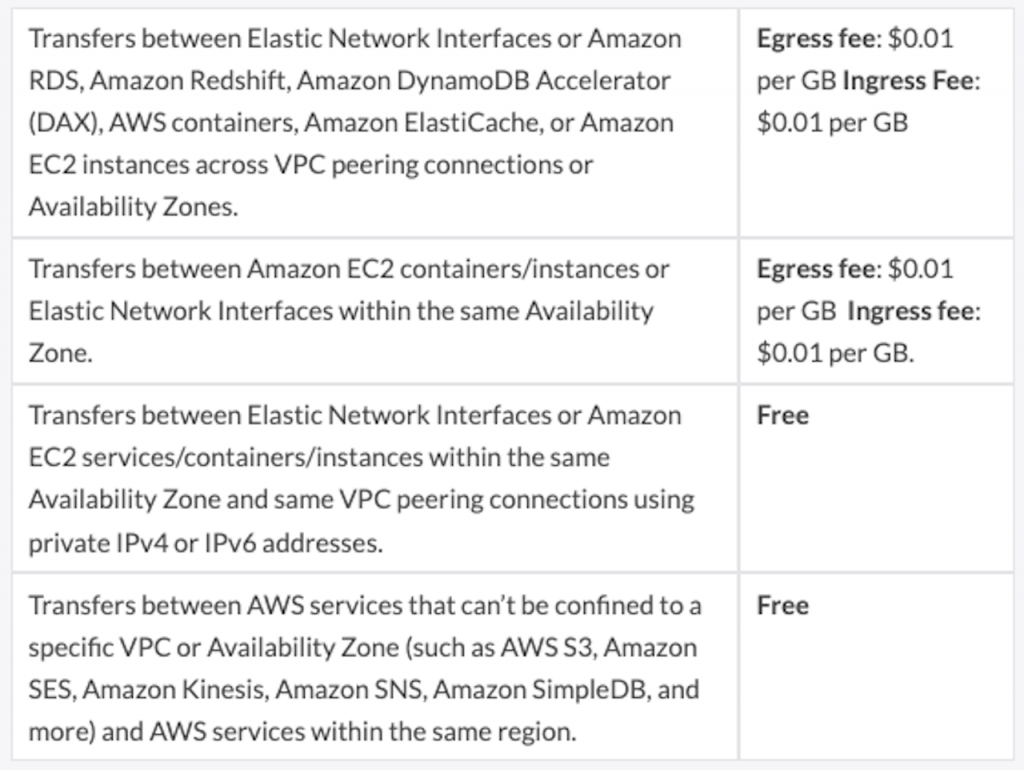Navigating the Complexity of AWS Data Transfer Costs

By Ilan Shamir, co-founder and Chief Product Officer, Resilio
Picture this. You use Amazon Web Services (AWS), harnessing its vast capabilities to store and transfer data across the digital landscape. Everything seems smooth until one day, an AWS bill arrives—a bill that leaves you scratching your head in disbelief. The data transfer costs are significantly higher than you expected.
Welcome to the labyrinthine world of Amazon's data transfer pricing. It's a world where complexity reigns, costs vary based on region, and surprises in your bill are common.
AWS does offer a free tier, covering up to 1GB of data transfer per month. But for many, this is not enough. And when it comes time to settle the bill, the shock can be substantial.
Adding to the confusion, Amazon charges a premium for data egress—a hefty markup based on location. A study by Cloudflare shows:
- In the US, Canada, and Europe, customers pay a staggering 80 times Amazon’s costs.
- South American users face a 21-fold increase.
- In Japan and Singapore, it's 17 times.
- In Australia and India, it’s 8 times more.
In this article, we’ll explain Amazon's data egress fees for different data transfer scenarios. We'll also share six valuable strategies to help you optimize AWS data transfer costs and keep your cloud storage expenses in check.
Unraveling AWS Data Egress Fees
The AWS cloud includes numerous regions worldwide, private Direct Connect links (i.e., private connections from on-premises sites to AWS), and AWS Edge locations (i.e., data centers connected to Amazon CloudFront).
Data transfers into AWS from outside are free. AWS wants to entice users to its platform, so it makes onboarding as frictionless as possible.
But when you start moving data around—either outbound to the internet or within the AWS cloud (from one region to another)—costs come into play.
Outbound Data Over the Internet
Sending data from AWS to the broader Internet incurs charges, and these costs vary depending on the region. It's a tiered system where the more data you send, the more you pay. The numbers can add up quickly.
For example, the chart below shows data transfer costs at each tier in the US East (Ohio) region.

You can also visit Amazon’s On-Demand Instance Pricing page for more information.
Data Movement Within AWS
Organizations can incur data ingress and egress costs in various ways. A few possible scenarios are listed below:
- Transferring Data within AWS Regions: Moving data between Availability Zones in the same AWS region carries a straightforward cost of $0.01 per GB in each direction. Moving data between a Local Zone and an Availability Zone within the same region results in charges at a tiered rate, contingent on the region. As an illustration, in the Argentina (Buenos Aires) region, the associated fee is $0.128 per gigabyte (GB). More information on data transfer pricing is available on Amazon's On-Demand Instance Pricing page.
- Transferring Data between AWS Regions: The costs are calculated based on the source region, so data transfer from the US East (Ohio) region to the US West (Oregon) region would be charged at the US East region rate.
- Transferring Data between Edge Locations and AWS Regions: Data ingress from AWS regions to Edge locations is free, but when data makes its way back to the core AWS Region, be prepared for region-specific charges. Detailed pricing information can be found on the Amazon CloudFront pricing page.
- Transferring Data between AWS Regions and Direct Connect Locations: In these situations, fees are based on source and destination. For example, a data transfer from the AWS Asia Pacific (Tokyo, Osaka) Region to a Direct Connect Location in Europe is charged at $0.09 per GB, but a transfer from South America (São Paulo, Mexico) to Japan is charged at $0.17 per GB. A chart with detailed cost information for moving data between AWS Regions and Direct Connect locations can be found on the AWS Direct Connect pricing page.
The Intricacies of Moving Data Within the Same AWS Region
Transferring data within the same AWS region seems straightforward, but don't be fooled; there are intricate rules governing these intra-regional transfers. The table below shows a list of rules and their associated costs to keep you on the right path.

How to Tame AWS Data Egress Fees
With the complexities of AWS data transfer costs, it quickly becomes apparent that keeping a tight rein on expenses is vital. Here are six ways to help you chart a course to reduce AWS data transfer expenses:
- Understand and Monitor AWS Egress Costs: Start by understanding the services and regions you use. Familiarize yourself with data transfer costs and vigilantly track your expenses, especially for services with intricate pricing rules. Be particularly vigilant about monitoring Amazon services with more specific pricing rules, such as Amazon Neptune, Amazon ElasticSearch, Amazon ElastiCache, Amazon MSK (Managed Kafka), and Amazon CloudSearch.
- Use Tools to Track and Manage AWS Egress Costs: AWS provides tools like the AWS Cost Explorer and AWS Budget Tool that enable you to create cost allocation tags and set cost thresholds aligned to your budget. These tools provide insights and alerts when you approach budget limits.
- Harness the Power of Private IP: Security meets savings when you opt for a private IP address. AWS Direct Connect creates private connections between on-premises devices and AWS, slashing the need for high-bandwidth internet and reducing egress fees for data exceeding 10GB.
- Keep Data Close to Home: Whenever possible, minimize data transfers between AWS regions. Intra-regional transfers are cost-effective, and you can further save by keeping data within the same Availability Zones and Virtual Private Clouds (VPCs). If possible, try to find a region with the lowest rates and keep your AWS resources within that region.
- Leverage a Content Delivery Network (CDN): When delivering rich content to the public, such as high-fidelity video or audio, consider using a CDN like Amazon CloudFront. CDNs compress files, lower latency, and reduce data transfer size and costs compared to transferring data through an AWS region. Amazon CloudFront is a good CDN option since the service transfers data via low-cost data centers.
- Use an Efficient Cloud Storage Caching Gateway: A cloud storage caching gateway can act as your trusted navigator, optimizing cloud costs and productivity. An efficient approach uses peer-to-peer architecture, sophisticated caching rules, and WAN optimization to greatly reduce data egress fees. These gateways enable you to selectively store frequently used files on local devices and house infrequently used files in long-term cloud storage.
As you see, there are many intricacies of AWS data transfer costs. As you navigate these digital waters armed with newfound knowledge and strategic tools, you'll be better equipped to master the art of controlling AWS data egress fees, ensuring your cloud storage expenses stay on course without surprises.
Sources

Ilan is co-founder and Chief Product Officer of Resilio, where he leads the Product and Engineering teams. Before Resilio, he served in leadership roles for many leading technology companies, including BitTorrent, Check Point Technologies, and Decru. Ilan has also served as a visiting scientist at the MIT Media Lab, focusing on peer-to-peer software research.